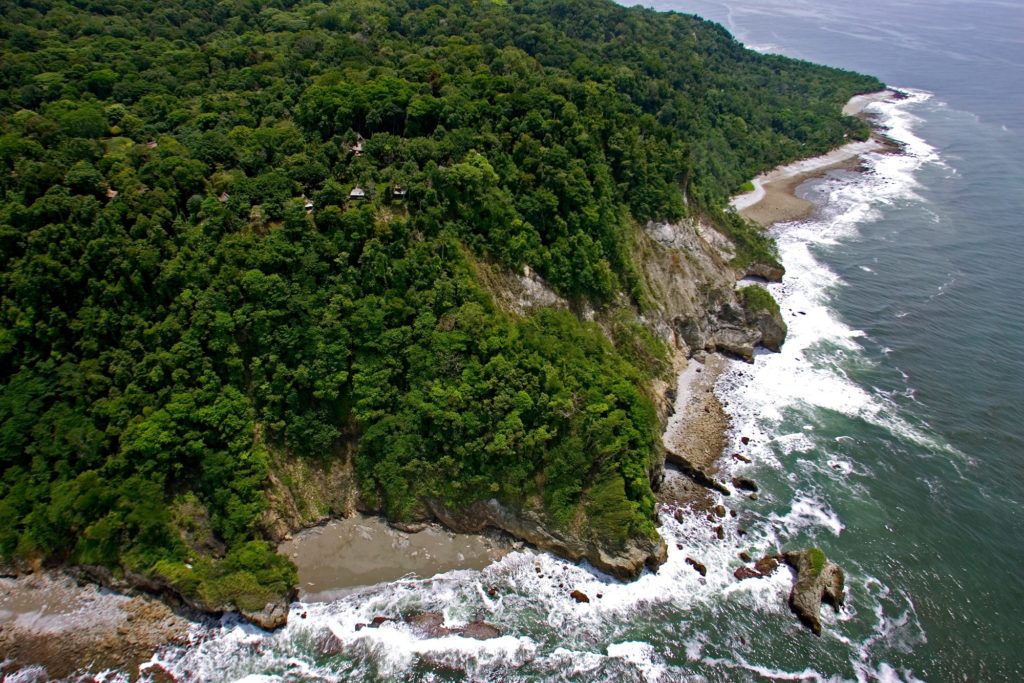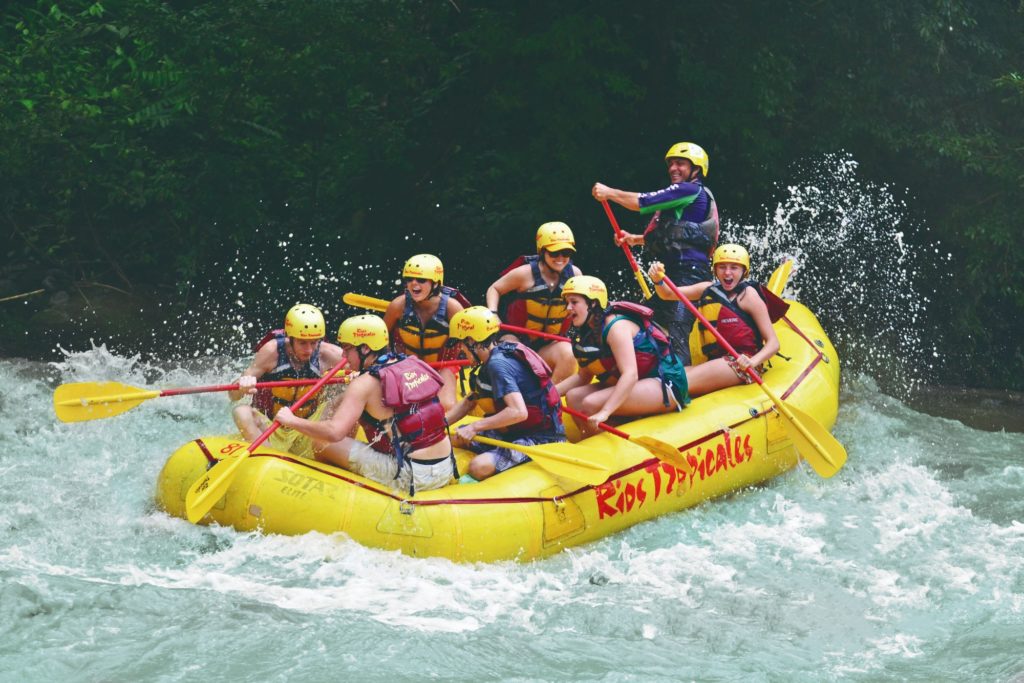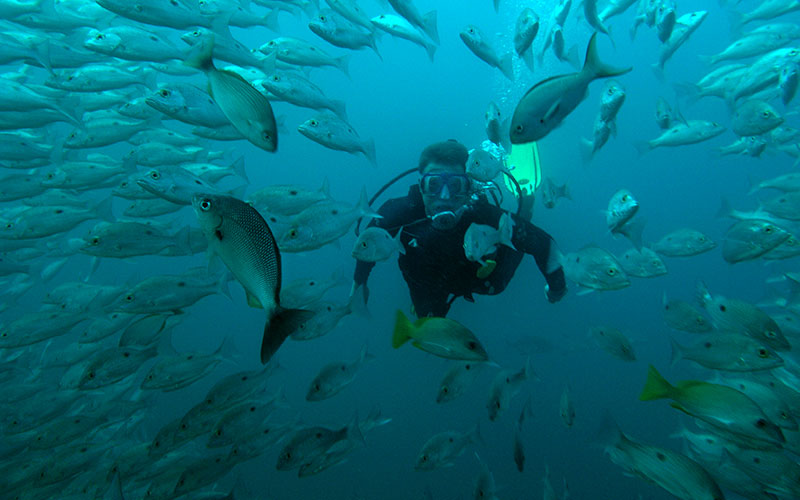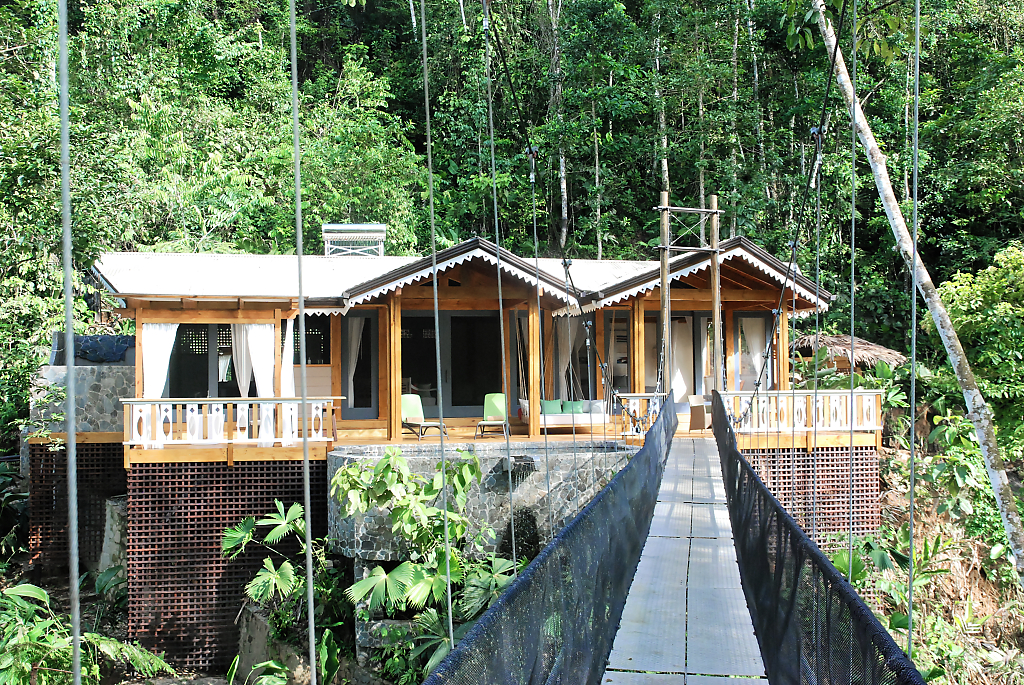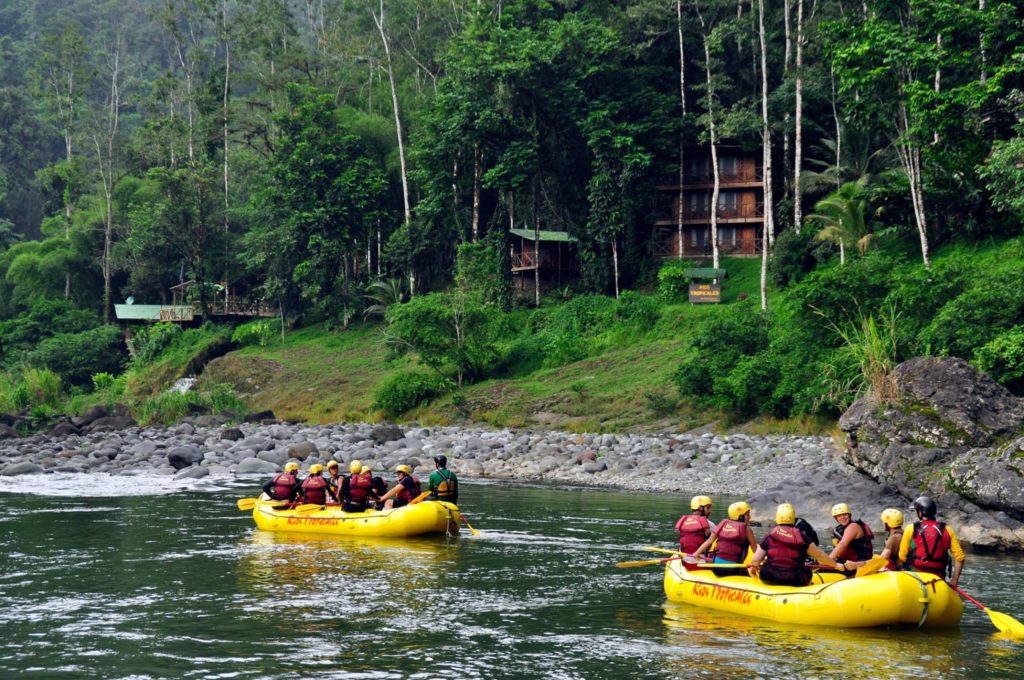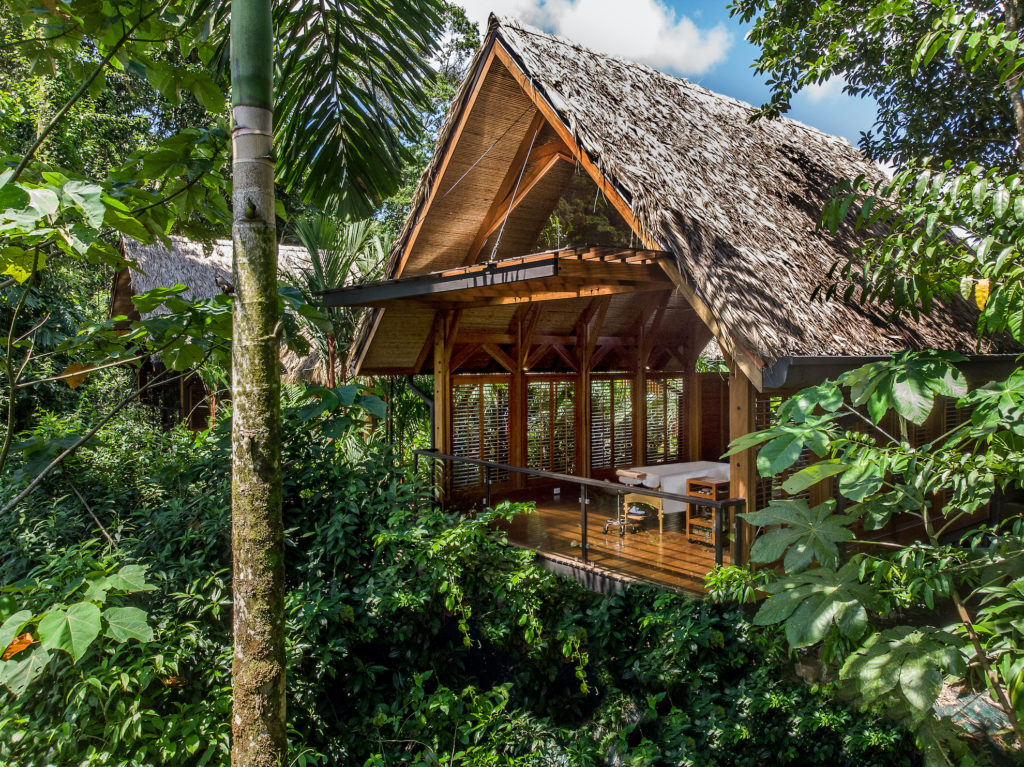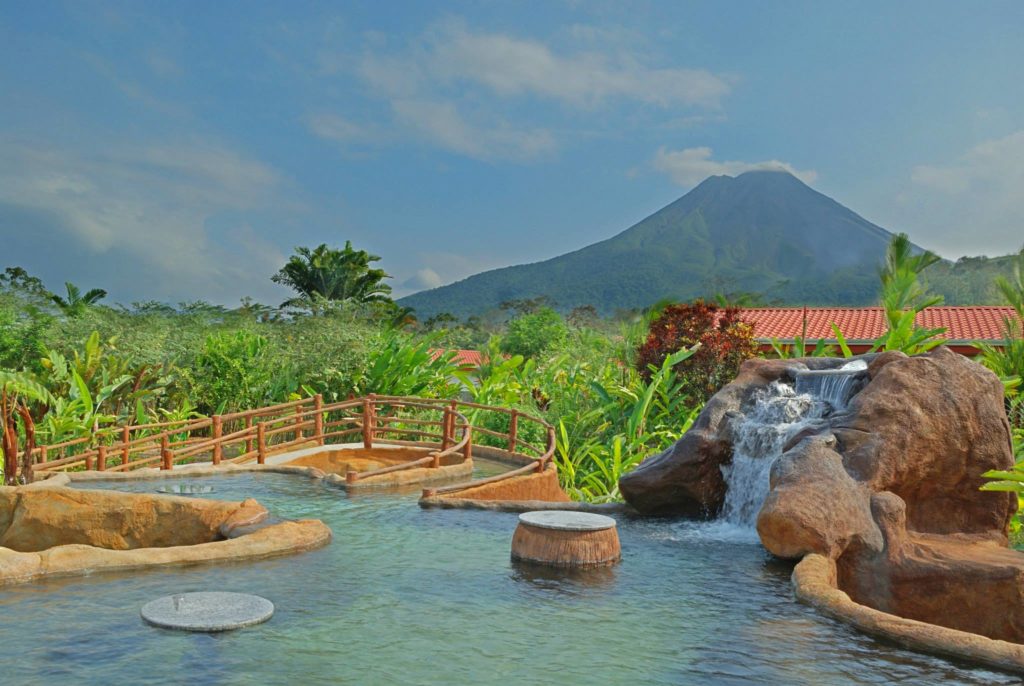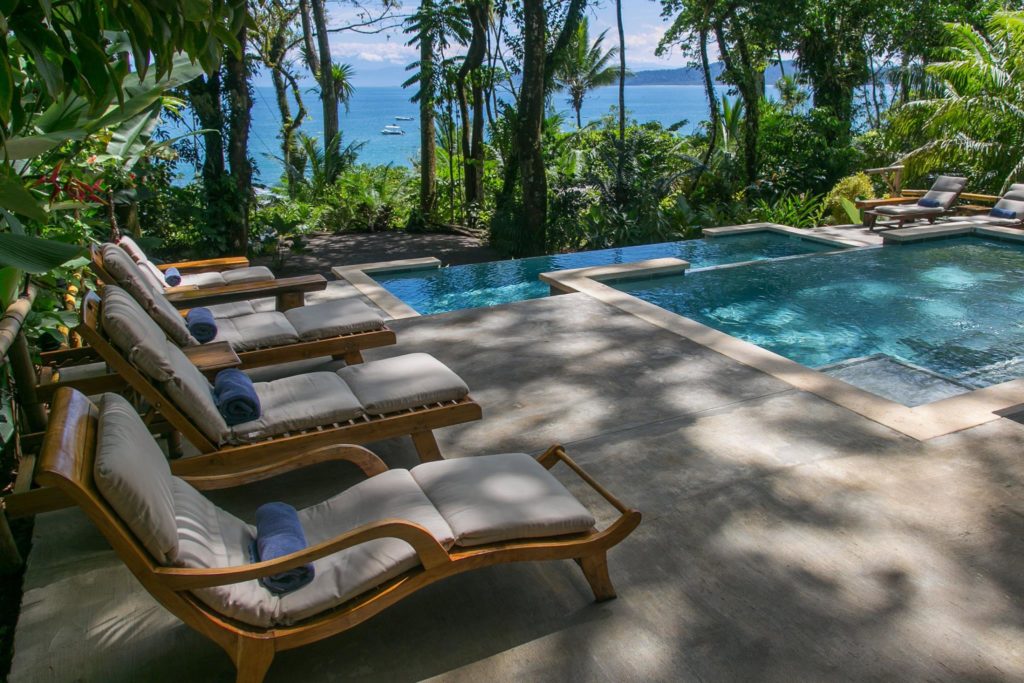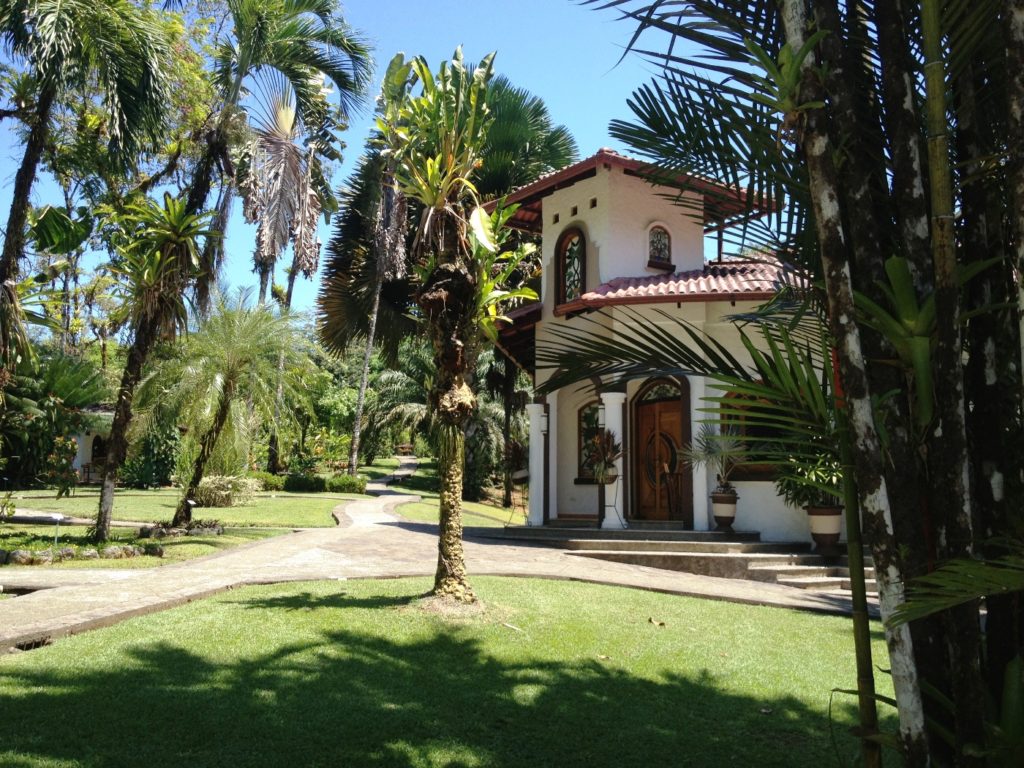Seasonal Information
If you love exclusive ecofriendly accommodations, a bit of adventure and unique places, this is the trip for you. This 11 nights program offers you chances to explore the unique flora and fauna of Costa Rica in unique and ecofriendly lodges while blend in a bit of adventure. Enjoy the thrills of white water rafting to Pacuare Lodge, fullfill the adventure with the Sky Trek, go kayaking in the mangroves of the Central Pacific and discover the natural magic of Osa Peninsula. Definitely a lifetime experience!

- Pacuare River
- Arenal Vulcano
- Sky Trek at Arenal
- Manuel Antonio National Park
- Corcovado and Isla del Caño National Park
A world of exclusivity and uniqueness is waiting for you in our boutique journey to the land of Pura Vida! A selection of unique properties nestled in away from ordinary destinations will let you see Costa Rica from the most personal point and explore a land of friendly people where the magic of Osa Peninsula, amazing views of the Central Valley and the sandy beached of Guanacaste will walk you into a world of unique adventures.
Arrival at the Juan Santamaría International Airport (SJO). A representative will meet and greet you upon your arrival and will provide you with all the necessary documentation you will need during your trip, itinerary and the main contact information and phone numbers in case further assistance is required.
Then, you will be transferred to San Jose area where you will be staying at Grano de Oro hotel. It is considered an oasis right in the heart of the city, retaining its Victorian style tropical decor. With Spanish tile fountains, small pieces of Costa Rican art, beautiful gardens with tropical flowers, and best of all, his warmth in the service, which will display to you the famous Costa Rican hospitality upon your arrival.
Today an incredible rafting journey is waiting for you. The Pacuare river passes through scenic canyons where crystal clear waterfalls plummet down into the rapidly coursing river below. Tall trees and dense green vegetation come right down to the water’s edge. Once arrived at the Lodge, you will find a unique jungle oasis nestled in a most remarkable setting. After a hearty lunch, you will have the rest of the afternoon at leisure to relax or enjoy the optional activities.
Awaken the next morning to the harmonious melody created by the sounds of the river and the sweet songs of tropical birds. Day at leisure to enjoy the scenic beauty of the natural surrounds of the Pacuare River and the optional activities offered at the lodge. Thanks to its proximity to the Caribbean lowlands and the high annual rainfall, this area offers very complex life systems and exotics, formed by the extraordinary abundance of the rainforests and its exuberant vegetation which provides protection for jaguars, ocelots, monkeys, sloths and numerous species of birds and plants.
Today is full of adventure and adrenaline. A professional guide and the right equipment will be waiting at the river, and after some safety instructions, you will start on this incredible rafting journey. In the water, you will experience the exhilaration of riding the waves on this wild and scenic river, which passes through picturesque canyons where crystal-clear waterfalls plummet down into the rapidly coursing river below. You may stop to explore side streams that lead to striking waterfalls and pools with a natural waterslide that tempts you to jump.
A picnic lunch will be served along the river, and when you reach the end, you can change into dry clothes and head to the drop-off point to continue by land transfer towards the northern lowlands. Along this route you will pass through different towns such as Puerto Viejo (Sarapiqui), San Miguel, Venecia and Aguas Zarcas. In addition, along the way you will enjoy the beautiful scenery, which includes amazing views of the mountains and one of the major sources of revenue in the area: the agriculture. Depending on the season, you will observe pineapple, banana and/or sugar cane crops. You will arrive in La Fortuna Village late in the afternoon, where the mighty Arenal Volcano will welcome you with its impressive perfect conic shape.
The following morning after breakfast you’ll set off for your morning adventure. Take the sky tram for a 1,250 meters, 20 minute ride to the start of the Sky Trek. This is where the thrills really begin! The trek consists of a series of ziplines that stretch for 1.7 miles high above the treetops, and with breath-taking views of Arenal volcano and lake.
Afternoon at leisure.
Today travel to Central Pacific Coast, specifically to Manuel Antonio National Park. You will be passing through a scenic mountain road with various climates and elevations. On the way, you will be driving along the coastal road until reach the fishing town of Quepos. Finally, at just few minutes from there, you will arrive to Manuel Antonio National Park where you will be impressed by the magnificent beaches of this beautiful National Park. In this area, you will enjoy two night accommodations at selected hotel.
Spend the next 2 days at leisure for you to enjoy the hotel facilities, the beach and even consider on taking an optional (extra cost) day tours in the area. No trip to Costa Rica’s mid-Pacific region is complete without a visit to the Manuel Antonio National Park; Perhaps it is so popular because of its expensive white sand beaches backed by an evergreen forest that grows right up to the high tide line. In addition, you will have a number of different adventure options like kayaking, fishing, snorkeling, diving, horseback riding and canopy.
After breakfast, we will continue to the South Pacific area of Costa Rica, specifically the area of Sierpe. Upon arrival, a boat will take you across the river and the sea to the selected Lodge. You will stay in the next three nights in Corcovado. This area of the South Pacific of Costa Rica is currently called “The Final Frontier” or “The Navel of Life”, as described by National Geographic as “the most biologically intense place on Earth”. This region is home of 350 species of birds, 150 species of mammals, over 100 species of reptiles and amphibians, about 5500 insects, and 500 species of trees. Staying in this area will allow you to have a deeper contact with nature, especially for those seeking a unique and eco- tourism vacation.
After breakfast, we will enjoy an excursion to Corcovado National Park, located in the Osa Peninsula. This is a wonderful opportunity to see the primary and secondary forest, as well as a wide variety of flora and fauna. The boat trip to the ranger station takes approximately 30 minutes, but it depends on the weather and the sea. Whenever possible, as we approach to the park entrance, your guide will try to show you the ocean whales, dolphins, or other marine species. The first part of the trail is a steep hill, through the secondary jungle. Large slabs of tree trunk are strategically located for an easier walk on the ground. Just before reaching the plateau, on your left side, there will be a viewpoint overlooking the resort and the Pacific Ocean. While enjoying a light lunch on the veranda and a short break, you will have the opportunity to take stunning shots, and from this point, you will be able to see whales and / or dolphins.
On the final day you will visit Caño Island Biological Reserve, which is located just 12 nautical miles from the coastline. The boat ride to the island takes about 45 minutes, but it depends on the weather, sea and other conditions. The island, which is located 90 meters above sea level, rises to a wide plateau, which is covered with a forest of evergreen high. On the island, it is possible to observe the stone spheres made by the first civilisations that inhabited the area. Right in front of the ranger station, there is a beach area most often used to relax and have fun. The real beauty of Caño Island is not in their land, but underwater, as it is surrounded by five platforms of coral reefs, where experts have identified more than 15 species of stony corals. The dark volcanic rock is home to many impressive species of marine flora and fauna. The water is relatively shallow and suitable for snorkelling, allowing an excellent opportunity to become familiar with marine life surrounding Caño Island.
The sea and land transfer will take you back to Drake airstrip, to take a domestic flight to San Jose. Upon arrival, a representative will take you to the international terminal for your flight back home.
Dates are flexible so please make an enquiry and tell us a range of dates you are considering so we can check availability.
- Transfer Program
- Program available all year
- Minimum age of 13 years.
- Minimum participants 2 Adults
- Flexible itinerary
- Maximum Luggage weight in local flight 40 pounds plus 10 pounds hand luggage
- Private unescorted transfer from SJO Int’l Airport to San Jose
- One (1) night accommodation at hotel, San José
- Two (2) night regular Pacuare
- Includes: transportation bus-raft, bilingual guide, lodging and daily meals.
- Private Transportation from Siquirres to Arenal
- Two (2) nights’ accommodation at Arenal Volcano area.
- Regular Sky Tram, Walk and Trek tour in Arenal
- Private Transportation from Arenal to Manuel Antonio
- Three (3) nights’ accommodation at Manuel Antonio area.
- Private Transportation from Manuel Antonio to Sierpe
- Three (3) night package to Corcovado
- Includes Lodging & Meals, Boat Transportation, Tour to Isla del Caño and Corcovado National Park
- Local flight form Drake Bay to San Jose
- Maximum weight 40 pounds checked luggage and 10 pounds’ hand luggage
- 11 breakfasts, 6 lunches & 5 dinners.
- Sales taxes.
- Meals not listed in the itinerary.
- Tips or gratitude’s
- Souvenirs
- Tours at the destinations that are not listed in the itinerary
- All Flights
- Suitable for active people
- Children over 13
- Family
- Birdwatchers
- Divers
Suitable for ages 12 to 70
The Minimum ages for the White Water Rafting is 12 years. Also depending on the hight or weight of the 12 year old child and the level of the water, the local guide can dicide on site if the child may participate or not.
Costa Rican cuisine is relatively bland compared to other countries of Latin America and the Caribbean. However, eating and drinking in areas frequented by tourists is generally safe. Costa Rica’s concern for food safety also makes it an ideal location to sample the wide variety of tropical fruits that are available throughout the year. The prices could vary according to the destination and would be between $15 and $30.
Coffee of course! Refrescos or simply frescos are beverages made from fresh fruit (cas, guayaba/guava, sandia/watermelon, mora/blackberry, fresa/strawberry, piña/pineapple, papaya), sugar and either water or milk (depending on the fruit).
Horchata – A corn meal drink flavoured with cinnamon
Guaro – the national firewater drank by the shot! Café Rica – A locally made coffee liqueur
The Gallo pinto – traditionally served at breakfast, is a mixture of rice and beans with a little cilantro, onion, red pepper thrown in, do not forget to ask for the secret ingredient: Salsa Lizano
Casado, which means married, is the typical lunch in Costa Rica, containing rice and beans with meat, chicken or fish, always served with salad and fried plantain
Arreglados – Puff pastries filled with beef, chicken or cheese
Sopa negra – Black bean soup with a poached egg
Empanadas – Are usually made of a corn dough that can be filled with anything: chicken, beef, beans, pork, potatoes. You can find sweet versions.
Ceviche – Seafood marinated in a lemon, onion, sweet red pepper, garlic and coriander sauce
Potacones – A great snack found on the Caribbean coast. Fried plantains and usually served with refried beans and guacamole.
Flan – A cold caramel custard
Mazamorra – A pudding made from cornstarch
Taxes account for 13% of the purchase and are always included in the final price. In restaurants and hotels, taxes and services are included in the final price; however, if you were happy with the service and would like to leave a gratuity, it would be welcome
In general, the climate in Costa Rica is very pleasant not only during the dry season, which extends from December to April but also during the rainy season, which runs from May to November. During the rainy season, rain can be expected in the afternoons; on the other hand, the mornings are usually sunny.
Costa Rica has a tropical climate with an average temperature of 22 degrees C (72 degrees F) that increases considerably on the coastal areas. The changes in temperature are considerable and due to the short distances in this relatively small country, they can all be experienced in just one day.
Due to factors such as the geographical location, the weather conditions, the formation of mountain chains, mountains, and valleys, this country experiences different microclimates that give a home to different types of vegetation.
The tropical region: Pertaining to the dry season, with temperatures between 26 and 27 degrees C.
The inter-mountainous valley region with an elevation between 1,000 and 1,100 meters in altitude which is a characteristic of the central valley, with temperatures that range from 14 to 18 degrees C.
Due to the weather characteristics and the topography of the country, different types of forests can be appreciated: the cloud forest, the rain forest, the dry forest, and the transition forest
There is an ample selection of state owned and privately held banks in San Jose, and throughout the country. The official currency of Costa Rica is the colon; however, US dollars are widely accepted. US dollars and traveler’s checks can be changed in banks and hotels. Most major credit cards are widely accepted, and cash advances can be obtained at banks around the country and a variety of places throughout San Jose.
Ninety seven percent of the national territory has electrical service. The voltage in residential areas is 110B\V 60 HZ (the same as the United States and Canada) is the standard in Costa Rica.
GMT/UTC -6. Costa Rica is in the Central time zone.


